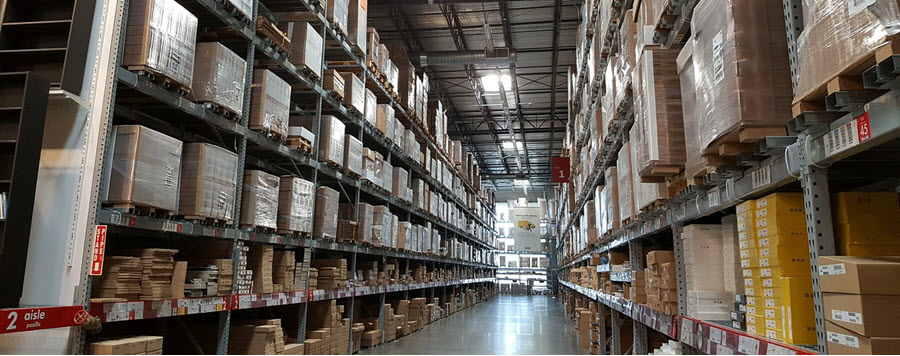
5 Tips for Increasing Warehouse Safety

As the retail industry continues to expand and more warehouses pop up all over the country, warehouse safety concerns are on the rise, as well. Amazon alone now manages more than 180 million square feet of distribution facility space and roughly 1.2 million workers. While these warehouses create more jobs and help bolster the economy, the work doesn’t come without a fair amount of risk.
In 2019, Amazon reported a 7.7% injury rate among its employees. Industry-wide, the injury rate is 5.1%, which is the same rate as farming. These percentages may seem small, and it’s a testament to the industry’s commitment to warehouse safety improvements even in a field where heavy machinery is crucial.
However, when one considers the millions of employees within each industry, they equate to thousands of injuries each year. Luckily, facilities can implement multiple strategies and precautions to minimize risks and increase warehouse safety.
1. Train and Retrain Employees
All new workers should receive training regardless of past experience. Design a training schedule and use an online platform to track employee progress. Make sure requirements match OSHA standards and that everyone is on the same page by implementing ongoing learning programs.
Every few months, retrain employees on machinery and heavy equipment handling. Include updated safety regulations and any new safety procedures. Either require ongoing training as part of employees’ job descriptions or incentivize learning by offering raises, bonuses, and advancement to managerial roles.
2. Maintain Machines
Certain parts of warehouse equipment — like doors, seals, and hydraulic filters — require regular maintenance and replacement parts. Employees should have a working knowledge of each machine and understand how and when to perform maintenance. Otherwise, a machine could break and cause bodily harm to those around it.
Keep a log of who uses which machines when and record any maintenance issues or repairs. Schedule inspections and create reminders so team members don’t forget to perform annual or biannual maintenance work. For instance, employees should inspect overhead doors every 5,000 cycles. But it’s difficult to know when they’ve reached that milestone if they don’t keep track.
3. Wear Personal Protective Equipment
The Occupational Safety and Health Administration (OSHA) requires employers to protect their workers by providing, maintaining, and updating personal protective equipment. Of course, this mandate doesn’t specify which kinds of PPE they must provide. However, companies can improve safety with equipment like hard hats, gloves, vests, masks, and boots.
Employers might also look into smart PPE like helmets that connect over Bluetooth to deliver safety information and health data. Wearables like smartwatches can also track workers’ heart rate, body temperature, and even posture to minimize strains and other injuries.
4. Increase Alertness
Many warehouse worker injuries and fatalities occur out of negligence or a general lack of alertness. Of course, managers can always encourage employees to stay more alert and be aware of their surroundings. However, that’s not the only way they can promote safety.
Paint the floor in places that aren’t conducive to barriers and use signs and flashing lights to warn employees of potentially dangerous areas or situations. Put up proper signs and labels to notify workers of worksite precautions. Prohibit earbuds and train everyone to use their peripheral vision and hand signals to communicate in loud loading and unloading dock areas.
5. Use Automated Technology
If warehouses have a bit of wiggle room in the budget, they should consider adding automated technology to their facilities. Whether this addition entails location-tracking devices or robots to move and arrange shipments within the warehouse, these technologies significantly reduce safety hazards.
For instance, if robots can move large pallets of goods, there’s no need to use a forklift or even bend down and pick items up by hand, which can minimize the chance of injury. Automatic shutoff features on conveyor belts and other machinery also ensure everything comes to a halt if someone’s finger or leg becomes stuck or caught.
Creating a Culture of Warehouse Safety
Within the next eight years, the warehouse industry will likely experience a 3% growth rate as it adds more employees to its ranks. This influx of workers will undoubtedly inspire many companies to create a more coherent and comprehensive safety culture as they seek to train new employees and retain old ones.
Ultimately, this community approach to safety is what will protect everyone and optimize efficiency.
About the Author:
Evelyn Long is the editor-in-chief of Renovated, a web magazine for real estate and construction professionals.

